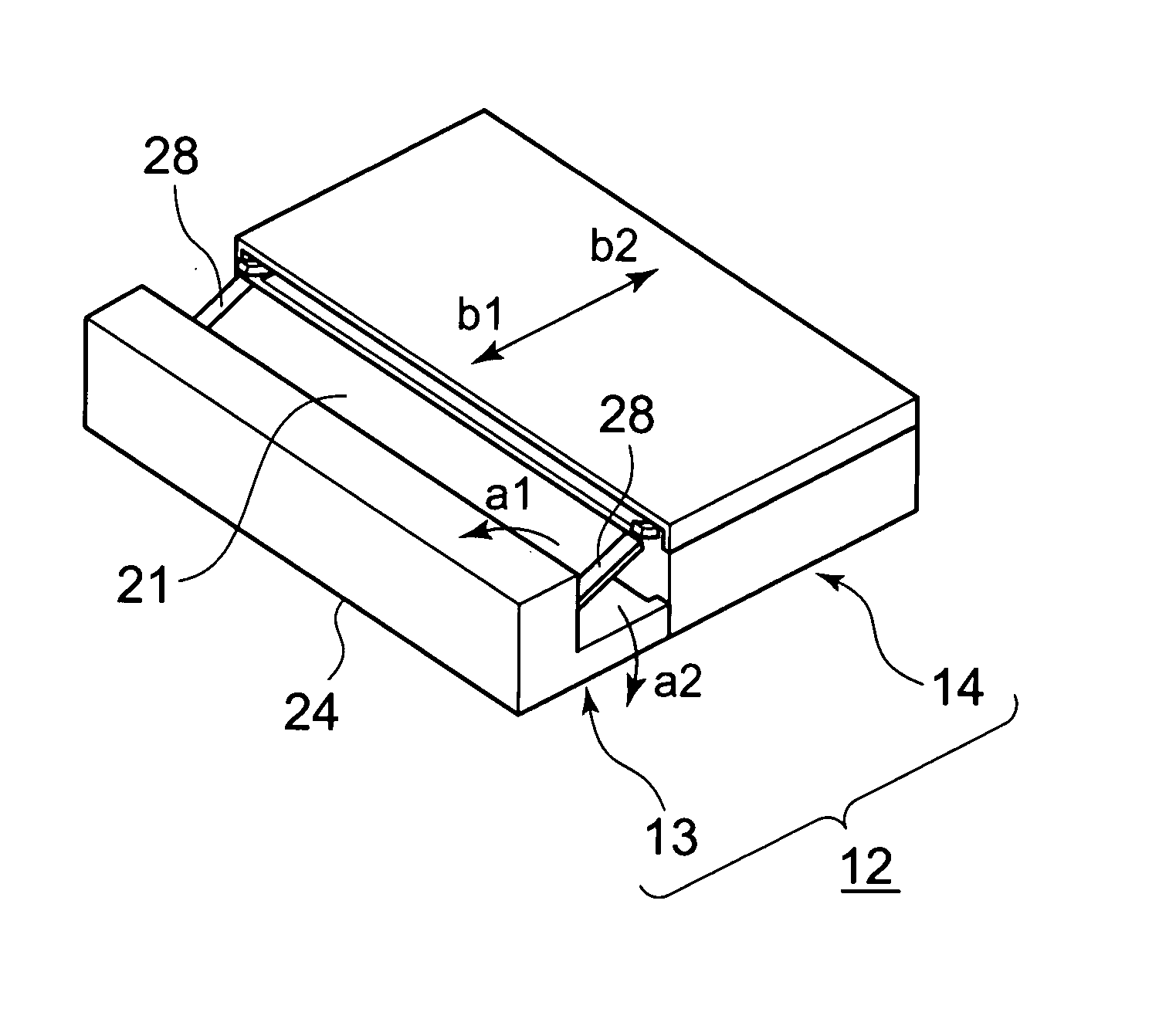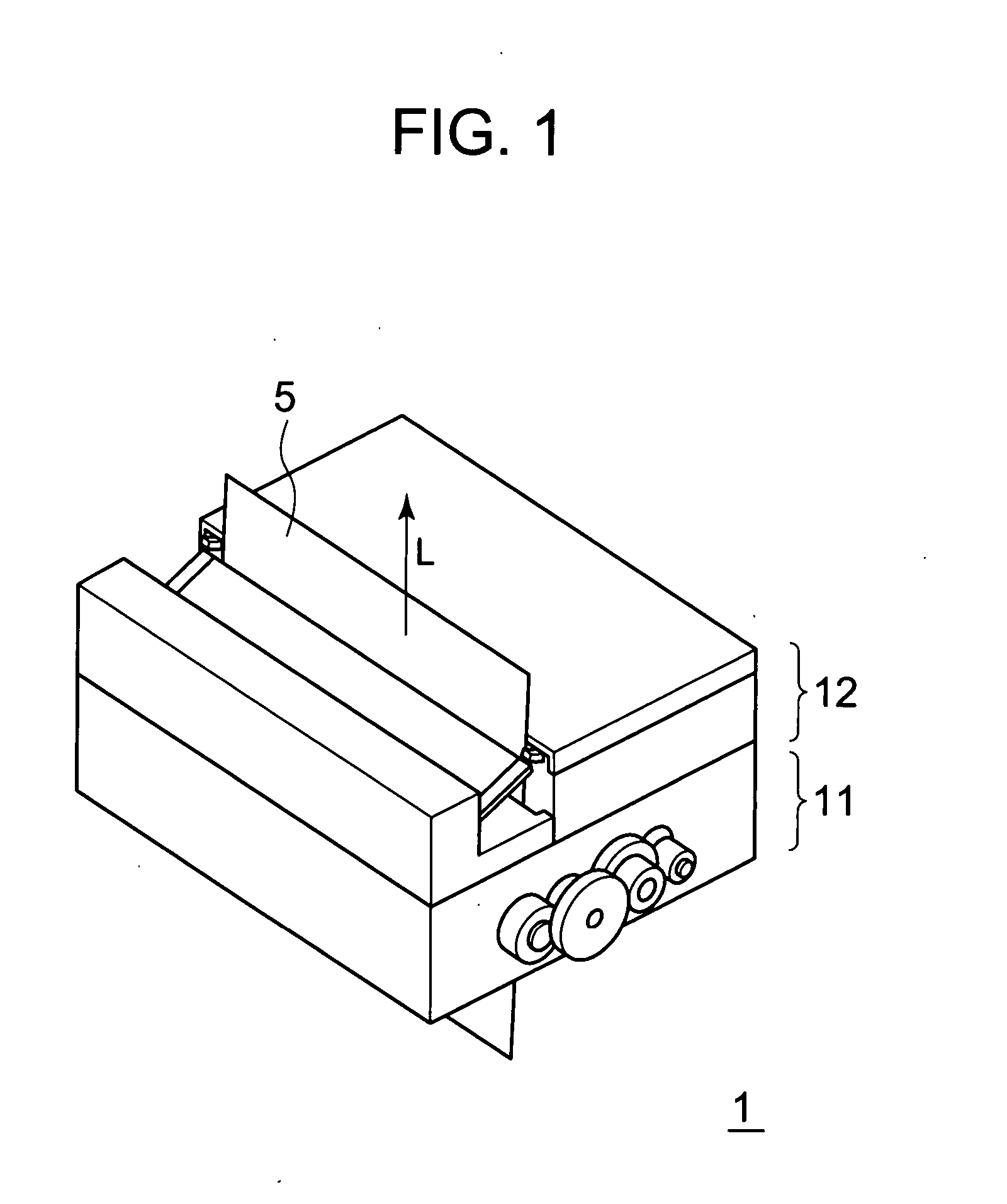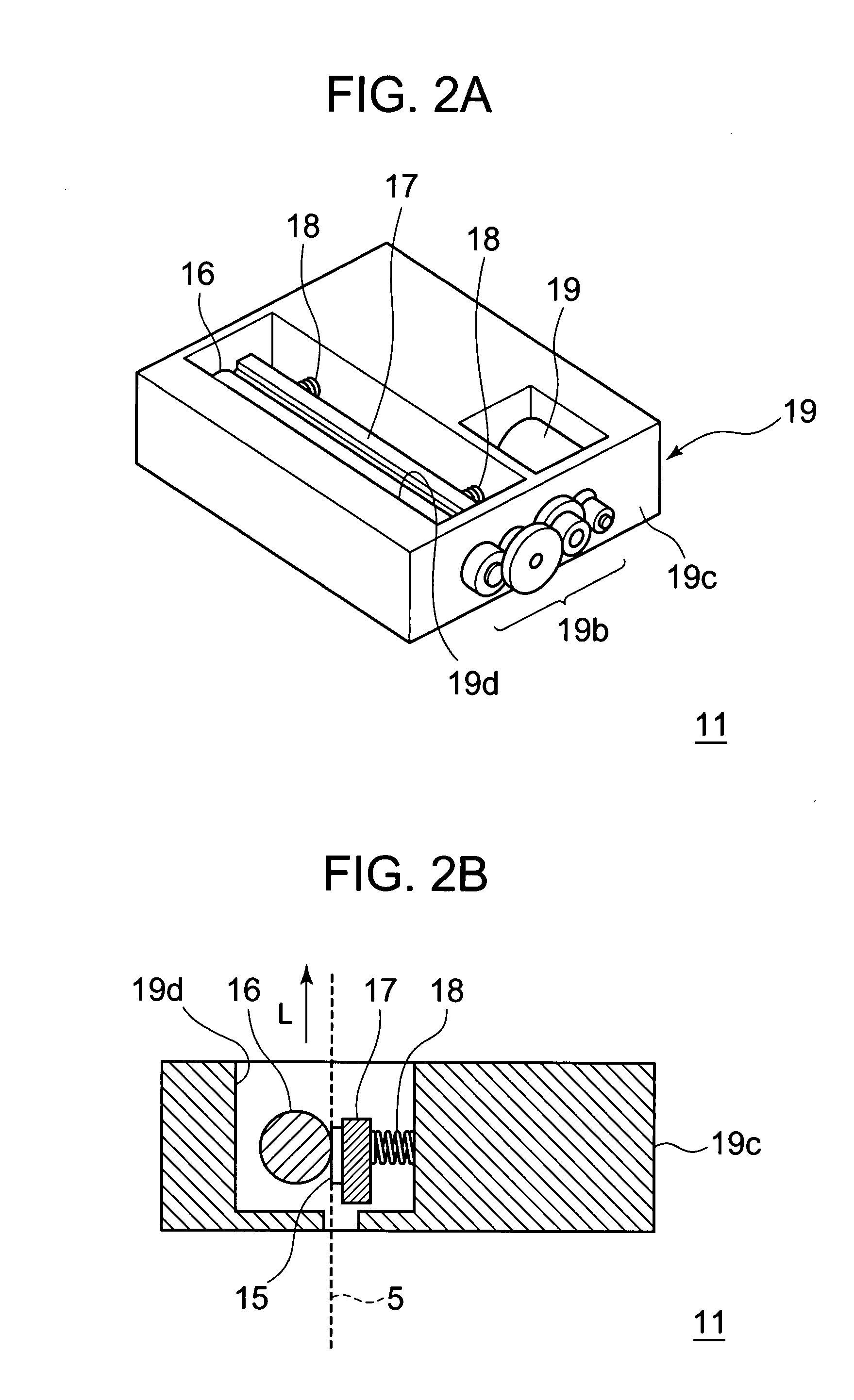Sheet cutting device, printer, and sheet cutting method
a cutting device and printer technology, applied in metal working devices, printing, other printing devices, etc., can solve the problems of reduced cutting performance, increased manufacturing costs, and reduced durability of fixed blades and movable blades, so as to reduce manufacturing costs, reduce manufacturing costs, and increase cutting performance. the effect of durability
- Summary
- Abstract
- Description
- Claims
- Application Information
AI Technical Summary
Benefits of technology
Problems solved by technology
Method used
Image
Examples
first embodiment
[0046] As shown in FIG. 1, a printer 1 includes a printing device 11 for performing printing on a sheet material 5 and conveying the sheet material 5, and a sheet cutting device 12 for cutting the sheet material 5 on which printing is performed by the printing device 11.
[0047] As shown in FIGS. 2A and 2B, for the printing device 11, a so-called thermal printer is used, and the printing device 11 includes thermal head 15 for allowing a heat sensitive print layer of the sheet material 5 to sense heat, a platen roller 16 brought into press contact with the thermal head 15, a head support body 17 for supporting the thermal head 15, a compression coil spring 18 for pressing the head support body 17 to the platen roller 16, and a drive mechanism 19 for rotating the platen roller 16.
[0048] The drive mechanism 19 includes a drive motor 19a, a gear train 19b for transmitting a driving force caused by the drive motor 19a to the platen roller 16, and a support block 19c for supporting the dr...
second embodiment
[0079] There will be described a second embodiment of the present invention in which spacers are provided on the movable blade 22 side unlike in the first embodiment adopting the structure in which the spacers 28 are provided on the fixed blade 21 side of the sheet cutting device 12. In the second embodiment, components identical to those of the above-mentioned first embodiment are denoted by the identical reference symbols and the description thereof will be omitted.
[0080] As shown in a portion B in each of FIGS. 8A and 8B, in the second embodiment, on the introduction portions 29 formed on the movable blade 22 provided to the sheet cutting device, spacers 38 to be brought into sliding contact with an opposing surface of the fixed blade 21 is provided.
[0081] Similarly to the spacers 28, the spacers 38 are formed so as to ensure the gap t equal to or smaller than a half of the thickness of the sheet material 5, and are joined to the introduction portions 29 of the movable blade 22...
PUM
| Property | Measurement | Unit |
|---|---|---|
| thickness | aaaaa | aaaaa |
| thickness | aaaaa | aaaaa |
| thickness | aaaaa | aaaaa |
Abstract
Description
Claims
Application Information
 Login to View More
Login to View More - R&D
- Intellectual Property
- Life Sciences
- Materials
- Tech Scout
- Unparalleled Data Quality
- Higher Quality Content
- 60% Fewer Hallucinations
Browse by: Latest US Patents, China's latest patents, Technical Efficacy Thesaurus, Application Domain, Technology Topic, Popular Technical Reports.
© 2025 PatSnap. All rights reserved.Legal|Privacy policy|Modern Slavery Act Transparency Statement|Sitemap|About US| Contact US: help@patsnap.com



